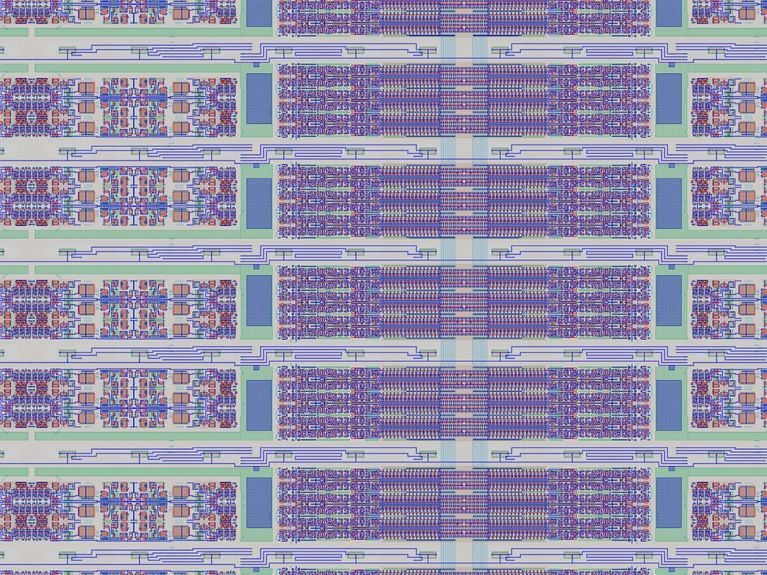
Challenge #117
Observing elementary particles intelligently.
Optimized sensors help us to understand the dynamics of elementary particles better and better. We are developing high-resolution cameras and optimized microchips for this purpose.
Participating centers
High-resolution sensors are now so powerful that they can also make elementary particles visible. But this level of detail is not enough for us; rather, we are interested in the direction of flight, the precise observation time, and the energy of these particles.
Elementary particles typically cause analog signals in detectors. At the Karlsruhe Institute of Technology (KIT), we develop high-resolution cameras and optimized microchips that amplify, digitize, and efficiently transfer these signals. In doing so, we also rely on the help of intelligent algorithms. Moreover, because we observe the elementary particles from many different planes and spatial angles, their trajectories can also be reconstructed. For better spatial resolution, we use ever smaller semiconductor structures.
These smaller structures are also useful for giving the sensor itself more intelligence, enabling it, for example, to autonomously search for noteworthy events. Our scientists are testing the use of artificial intelligence for this purpose. Such innovative sensors could significantly advance particle physics and thus our knowledge of matter and the universe.
Photo: Schaltungsdesign für einen am KIT entwickelten Detektor für das ATLAS Experiment am Large Hadron Collider des CERN (Bild: KIT)